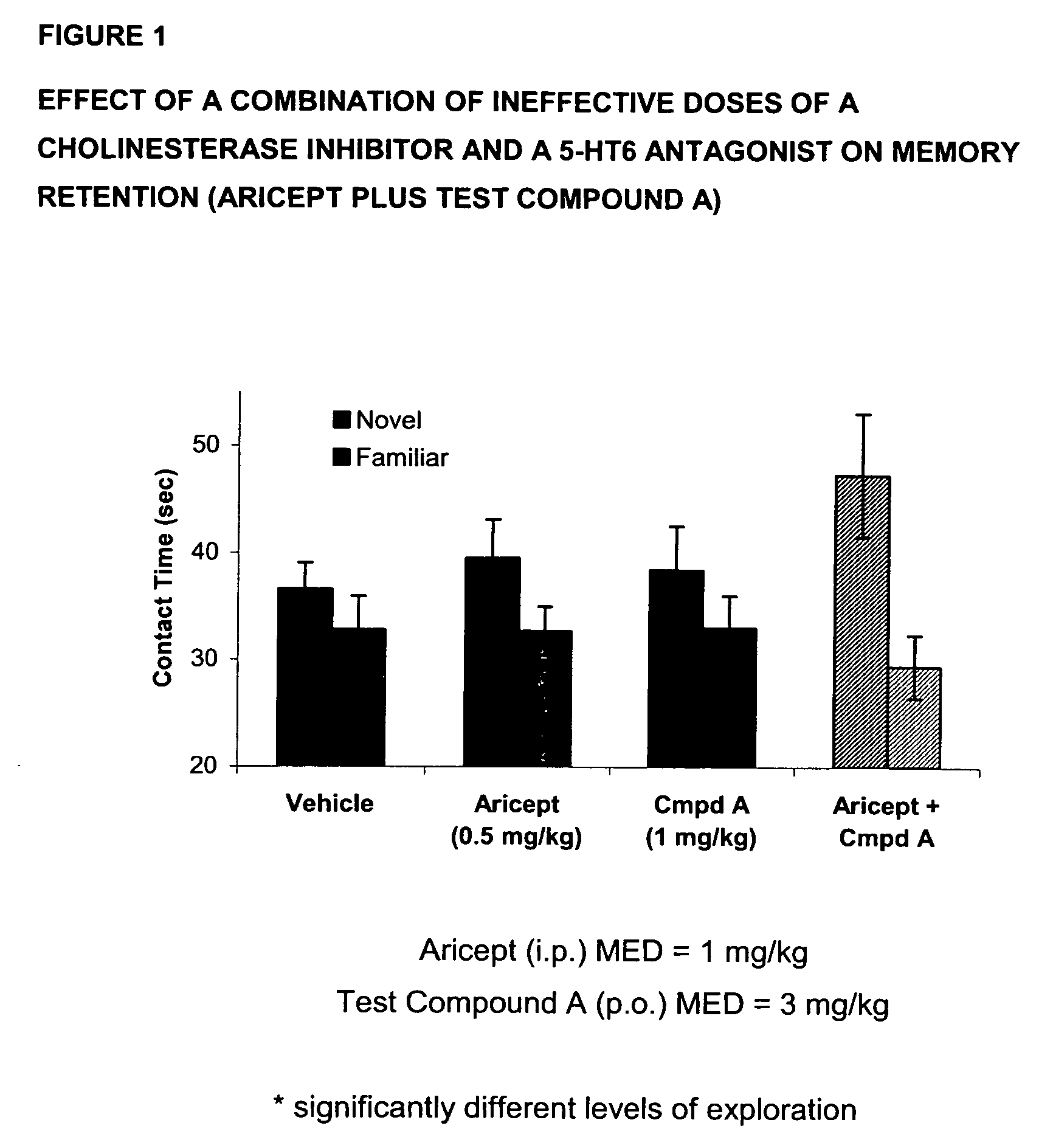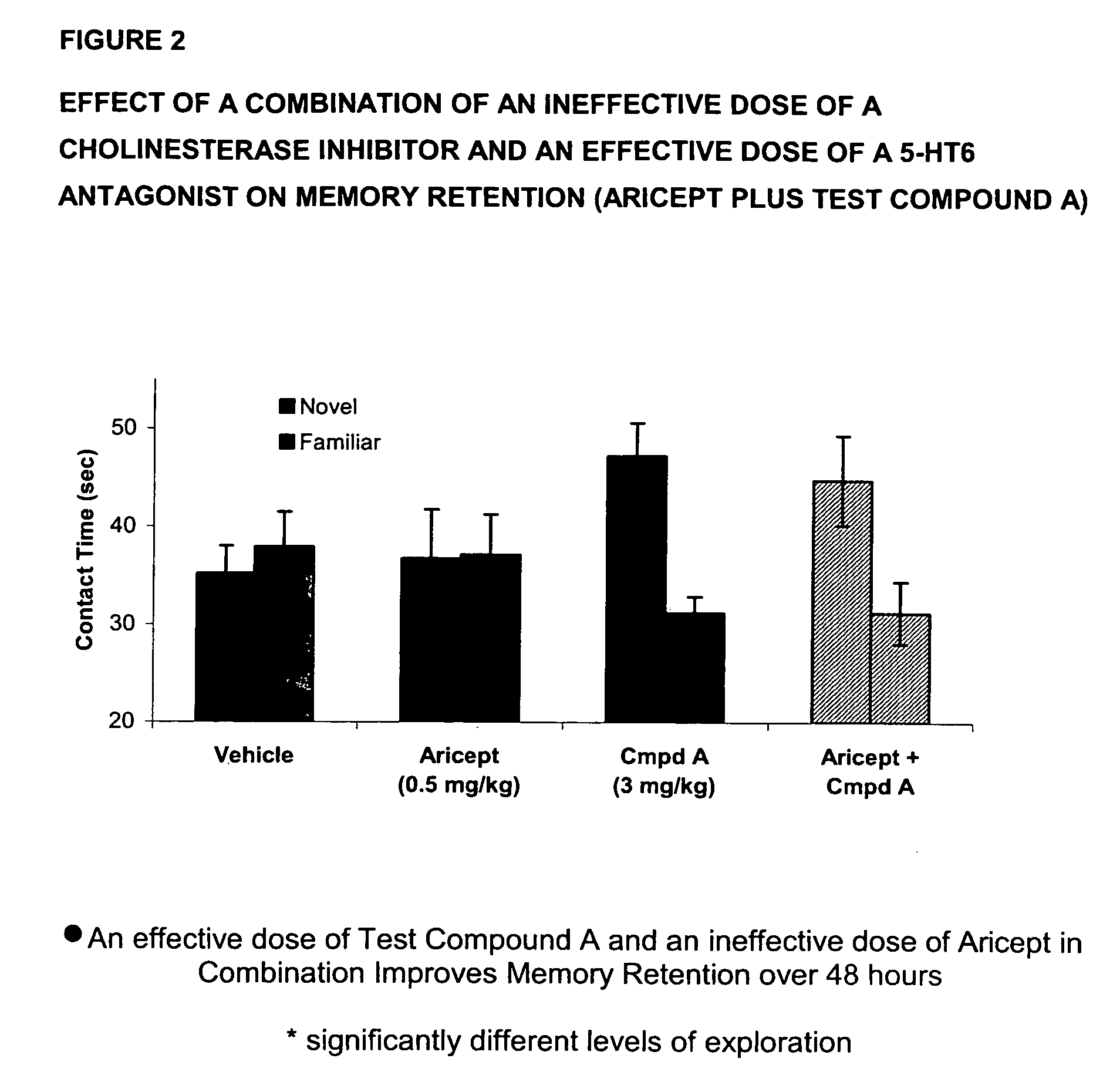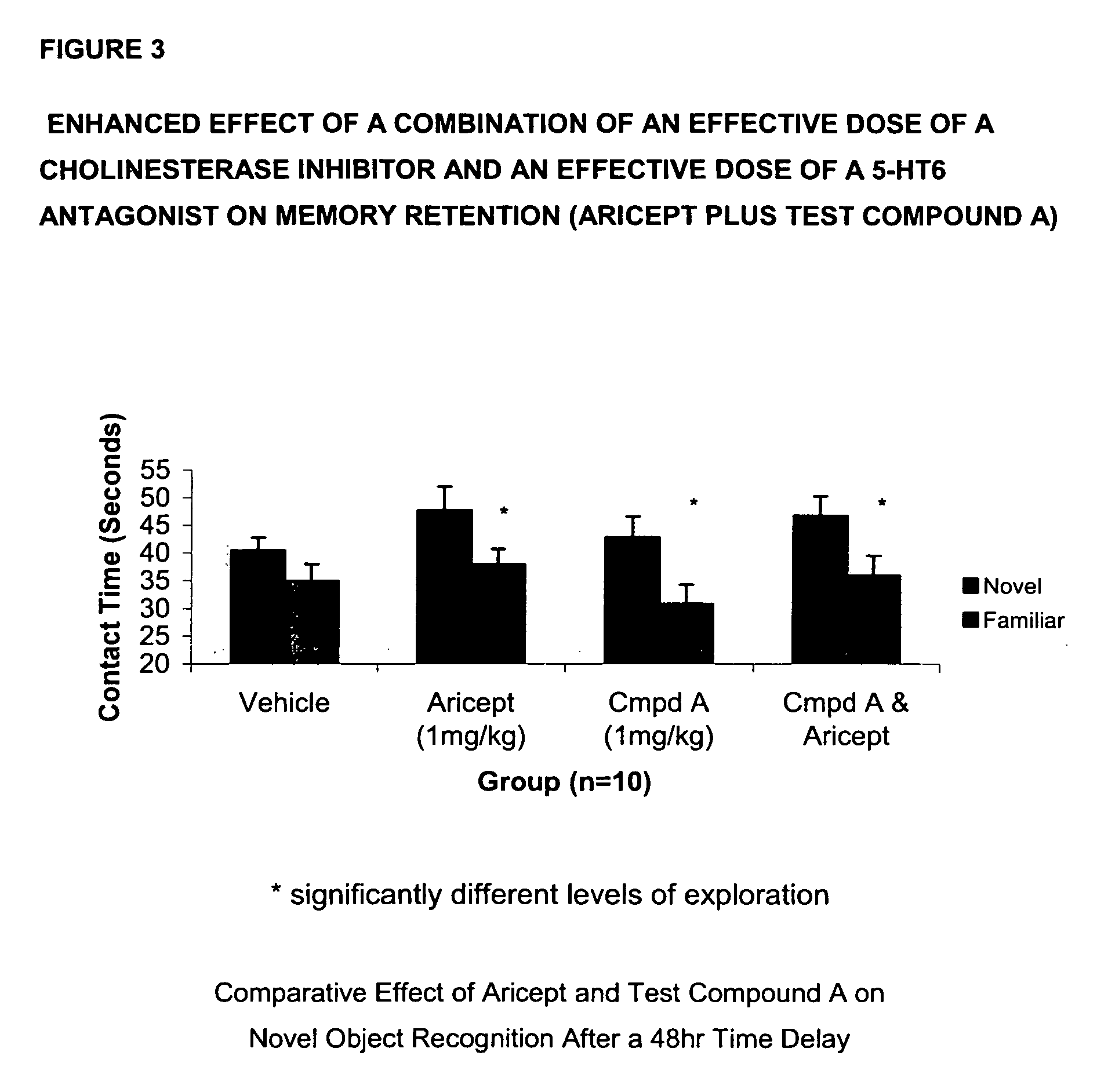Method for the treatment of cognitive dysfunction
a cognitive dysfunction and treatment method technology, applied in the field of cognitive dysfunction treatment, can solve the problems of increasing the number of therapies which target the cholinergic system alone, the insufficient effect of cholinergic therapy on the cognitive deficit, and the general limitation of therapies
- Summary
- Abstract
- Description
- Claims
- Application Information
AI Technical Summary
Benefits of technology
Problems solved by technology
Method used
Image
Examples
example 1
Determination of the 5-HT6 Binding Affinity and cAMP Production of a Variety of 5-HT6 Ligands
A) Evaluation of 5-HT6 Binding Affinity of Test Compounds
[0077]The affinity of test compounds for the serotonin 5-HT6 receptor is evaluated in the following manner. Cultured Hela cells expressing human cloned 5-HT6 receptors are harvested and centrifuged at low speed (1,000×g) for 10.0 min to remove the culture media. The harvested cells are suspended in half volume of fresh physiological phosphate buffered saline solution and recentrifuged at the same speed. This operation is repeated. The collected cells are then homogenized in ten volumes of 50 mM Tris.HCl (pH 7.4) and 0.5 mM EDTA. The homogenate is centrifuged at 40,000×g for 30.0 min and the precipitate is collected. The obtained pellet is resuspended in 10 volumes of Tris.HCl buffer and recentrifuged at the same speed. The final pellet is suspended in a small volume of Tris.HCl buffer and the tissue protein content is determined in ali...
example 2
Evaluation of the Effect of a Combination of Ineffective Doses of an Acetylcholinesterase Inhibitor and a 5-HT6 Antagonist on Memory Retention
[0083]In this evaluation, donepezil (Aricept) is used as the acetylcholinesterase inhibitor component and 3-(1-naphthylsulfonyl)-5-piperazin-1-yl-1H-indazole (Test Compound A) is used as the 5-HT6 component. Novel object recognition is a single trial non-aversive learning paradigm that utilizes the rodent's natural tendency to explore an unfamiliar object more than a familiar one. The learning phase of the paradigm consists of recording the amount of time a rat explores two identical objects it has never seen before during a 5-minute period. Following a 48-hour interval, during which the animal is returned to its homecage, the animal is placed back into the same environment now containing one of the original objects (familiar) and one never experienced before (novel). Recognition memory is reflected as an increase in time spent exploring the n...
example 3
Evaluation of the Effect of a Combination of an Ineffective dose of an Acetylcholinesterase Inhibitor and an Effective dose of a 5-HT6 Antagonist on Memory Retention
[0085]Using essentially the same procedure described in Example 2 and employing a 0.5 mg / kg ip dose of donepezil (Aricept) as the acetylcholinesterase inhibitor component and a 3 mg / kg oral dose of 3-(1-naphthylsulfonyl)-5-piperazin-1-yl-1H-indazole (Test Compound A) as the 5-HT6 component, the results shown in FIG. 2 are obtained.
Results and Discussion:
[0086]In FIG. 2, data is presented as mean+ / −SEM, with asterisks indicating significant (p<0.05) differences between exploration of the two objects. As can be seen in FIG. 2, Aricept (0.5 mg / kg, ip) alone produced no enhancement of recognition memory. Test Compound A (3 mg / kg, po) alone enhanced retention for the familiar objects. However, the combination of the two compounds produced a significant retention of the memory as evident by the significant difference between t...
PUM
| Property | Measurement | Unit |
|---|---|---|
| pH | aaaaa | aaaaa |
| volumes | aaaaa | aaaaa |
| concentration | aaaaa | aaaaa |
Abstract
Description
Claims
Application Information
 Login to View More
Login to View More - R&D
- Intellectual Property
- Life Sciences
- Materials
- Tech Scout
- Unparalleled Data Quality
- Higher Quality Content
- 60% Fewer Hallucinations
Browse by: Latest US Patents, China's latest patents, Technical Efficacy Thesaurus, Application Domain, Technology Topic, Popular Technical Reports.
© 2025 PatSnap. All rights reserved.Legal|Privacy policy|Modern Slavery Act Transparency Statement|Sitemap|About US| Contact US: help@patsnap.com



